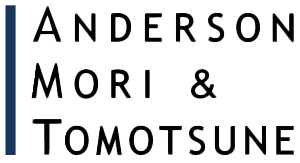- within Antitrust/Competition Law topic(s)
1. The European Commission (EC) issues draft guidelines on exclusionary abuse by dominant undertakings
Background
Article 102 TFEU ("Article 102") prohibits the abuse of a dominant position by undertakings that operate in the EU's Internal Market (the "Internal Market").
On 1 August 2024, the EC issued draft guidelines on the application of Article 102 to abusive exclusionary conduct1 by dominant undertakings (the "Guidelines"). Interested parties can respond to the Guidelines as part of a public consultation up until 31 October 2024.
The Guidelines set out the EC's reading of the existing jurisprudence of the EU Courts on exclusionary abuses under Article 102. By issuing the Guidelines, the EC intends to "enhance legal certainty and help undertakings self-assess whether their conduct constitutes an exclusionary abuse under Article 102".2 Although not binding on Member States' courts and competition authorities, the Guidelines also intend to give them guidance on the application of Article 102. At the very least it can therefore be anticipated that national courts and competition authorities will regard the Guidelines as a reference document.3
By way of background, the EC had previously published guidance on its enforcement priorities for exclusionary abuses in 2008 (the "2008 Guidance"). The 2008 Guidance set out an "effectsbased" approach to abuse of dominance cases – i.e., an approach whereby the EC would, using economic analysis, have regard to the potential effects of the relevant conduct. The EU Courts have since endorsed the 2008 Guidance and its "effects-based" approach, which has at times, frustrated the EC. This is because it has been seen as offering dominant undertakings greater scope to justify their behavior on the basis of efficiencies thereby raising the evidentiary threshold for the EC to establish "abuse".4
The Guidelines by contrast, following earlier signals by the EC5 to move away from this "effectsbased" approach, place emphasis on a "form-based" (or "legalistic") approach to abuse of dominance cases – i.e., an approach whereby the EC uses presumptions to determine specific types of conduct as abusive, thereby putting the onus of rebuttal onto the dominant undertakings themselves.
Analytical Framework of Article 102
The Guidelines set out the EC's understanding of the analytical framework that the EU Courts use to assess abusive exclusionary conduct.
In order to determine whether conduct by a dominant undertaking constitutes abusive behavior, it is first necessary to establish whether the undertaking is itself "dominant" (either by one undertaking or by two or more undertakings acting in "collective dominance").
On the assumption that dominance is established, the Guidelines set out the following two-part test for whether conduct by the dominant undertaking constitutes abusive behavior:
- whether the conduct departs from competition on the merits; and
- whether the conduct is capable of having exclusionary effects.6
For these purposes, the Guidelines introduce three categories of conduct for their assessment:
- conduct which falls outside the scope of competition on the merits and can be presumed as capable of having exclusionary effects as such conduct has no economic interest for that undertaking (such presumption being capable of disproof only in "very exception cases") ("Naked Restrictions");
- conduct with a corresponding "specific legal test", which if met, falls outside the scope of competition on the merits and can also be presumed as capable of having exclusionary effects ("Presumptively Exclusionary Conduct");7 and
- conduct which the EC must prove "departs from competition on the merits" and is "capable of having exclusionary effects" ("Other Conduct").
If the dominant undertaking's conduct constitutes abusive behavior under the above two-part test, it remains possible for that undertaking to show that the conduct is either objectively justified and proportionate, or counterbalanced by advantages in terms of efficiency that benefit consumers.8
It should also be noted here that the Guidelines dedicate a specific section to certain abuses (such as multi-product rebates or self-preferencing) that have been the object of jurisprudence from the EU Courts and that therefore require a more specific analysis as compared to the general legal principles discussed below.9
Naked Restrictions
Examples of Naked Restrictions include (a) payments by the dominant undertaking to customers that are conditional on customers postponing or cancelling the launch of products that are based on products offered by the dominant undertaking's competitors; (b) the dominant undertaking agreeing with its distributors that they will swap a competing product with its own under the threat of withdrawing discounts benefiting distributors; or (c) the dominant undertaking actively dismantling an infrastructure used by a competitor.10
This category of cases has generated little legal commentary given that they are the most egregious examples of anti-competitive conduct in the Guidelines. Furthermore, it is wellestablished in the case law of the EU Courts that such conduct is very unlikely to be regarded as compliant with Article 102.
Presumptively Exclusionary Conduct
By contrast, the introduction of the Presumptively Exclusionary Conduct category of cases has generated the most discussion since the Guidelines were announced.
Presumptively Exclusionary Conduct applies to (a) exclusive supply or purchasing agreements; (b) rebates conditional upon exclusivity; (c) predatory pricing; (d) margin squeeze in the presence of negative spreads11; and (e) certain forms of tying,12 each of which have a "specific legal test".
If the relevant specific legal test is met, its exclusionary effects can be presumed. However, it is of course open to the dominant undertaking in question to rebut the probative value of the presumption in specific circumstances by submitting, on the basis of supporting evidence, that the conduct is not capable of having exclusionary effects.
However, the Presumptively Exclusionary Conduct under the Guidelines has been criticized primarily on the basis that it is not settled law that all of the categories of cases should warrant an automatic presumption of being capable of having exclusionary effects. For example, exclusive supply or purchasing agreements.
Other Conduct
The Guidelines offer a broad definition of "conduct that departs from competition on the merits". For example, it is said to cover "conduct within the scope of normal competition on the basis of the performance of economic operators", which "in principle, relates to a competitive situation in which consumers benefit from lower prices, better quality and a wider choice of new or improved goods or services".13
Rather than providing a definitive test for determining what constitutes "conduct that departs from competition on the merits", the Guidelines put forward a non-exhaustive list of general factors that are relevant to the EC's assessment.14 One notable factor is "whether a hypothetical competitor as efficient as the dominant undertaking would be unable to adopt the same conduct".15 This is generally referred to as the "AEC Test" which, as summarized by the EC, analyses the price level charged by the dominant undertaking and a comparison with its costs, with the aim of assessing whether a hypothetical as-efficient competitor could profitably compete against a potentially abusive pricing practice by the dominant firm. This test has traditionally been centrally important when establishing abuse of dominance but the EC seems intent on reducing the importance of this test in the Guidelines.
This is because aside from its brief mention as one of six general (and non-exclusive) factors that the EC will take into account when assessing whether a certain conduct departs from competition on the merits, the Guidelines only offer limited guidance on the AEC Test when applied to predatory pricing cases, margin squeeze cases and certain conditional rebate schemes. This suggests the EC considers the AEC Test to have limited relevance for assessing whether conduct departs from competition on the merits and/or is capable of producing exclusionary effects. While the EC is not always required to conduct the AEC Test when reviewing potential abuses, it is still an important test which, according to the EU Courts, should guide the EC in most types of exclusionary abuse cases. Its downplaying in the Guidelines has therefore been criticized.
Finally, in the event that the EC needs to prove that the relevant conduct is capable of having exclusionary effects, the Guidelines explain that the standard of proof required is a low one. The EC simply has to demonstrate that the exclusionary effects are "more than hypothetical" - it does not require proof that the conduct at issue has produced actual exclusionary effects.16
Key takeaways
The Guidelines offer valuable and much welcomed insight into the EC's perspective of the jurisprudence of Article 102 on exclusionary abuses and clearly demonstrates the EC's intention to move away from an "effects based" approach to a "form-based" approach as it has previously signaled on numerous occasions.
However, as discussed, the Guidelines have received widespread criticism for not accurately summarizing the relevant jurisprudence of the EU Courts in places or for perhaps "cherry picking" certain bits of jurisprudence in order to achieve the EC's new policy aims. This is particularly true for the inclusion of Presumptively Exclusionary Conduct and the perceived side-lining of the AEC Test.
Although the Guidelines, when published, are intended to influence national courts in their interpretation of Article 102, they are nonetheless non-binding and will ultimately remain subject to the interpretation of the EU Courts.
It will be interesting to see how the EC responds to comments from interested parties received by the 31 October 2024 and whether we will see any significant changes in the Guidelines in their final form.
2. The EC issues its first Phase II investigation clearance under the Foreign Subsidies Regulation (FSR)
Background
On 24 September 2024, the EC approved the acquisition of PPF Telecom Group B.V. (excluding its Czech business) ("PPF") by Emirates Telecommunications Group Company PJSC ("e&"), a UAE-headquartered company, controlled by the Emirates Investment Authority ("EIA"), conditional on certain behavioral commitments.17
As set out in our previous AMT EU Law newsletters,18 the FSR is intended to remedy situations where subsidies offered by non-EU companies go largely unchecked. This is in contrast to subsidies offered by EU Member States that are subjected to the strict regime that has been imposed by EU State Aid control for many decades. This is said to create "distortions" in the Internal Market which the FSR seeks to address.
As a reminder, in the context of M&A transactions, the FSR imposes a mandatory notification obligation for companies engaging in concentrations where: (i) at least one of the merging companies has generated EU turnover of at least €500 million in the previous financial year; and (ii) the parties to the transaction have received combined foreign financial contributions exceeding €50 million in the three years prior to the conclusion of the acquisition.
Such a mandatory notification was required in this case. First, as a telecoms company operating across multiple jurisdictions in the EU, PPF passed the €500 million EU turnover threshold. Secondly, as it benefitted from an unlimited guarantee from the UAE and financing from UAEcontrolled banks to assist with the acquisition, e& passed the €50 million foreign financial contribution threshold.
The EC concluded that despite receiving such foreign subsidies from the UAE, the acquisition of PPF by e& did not lead to actual or potential negative effects on competition during the acquisition process. This was because, on the facts, the foreign subsidies did not alter the outcome of the acquisition process - e& was the sole bidder for PPF and had sufficient resources of its own to proceed with the acquisition.
However, the EC did conclude that the foreign subsidies could lead to distortions in competition in the Internal Market after the acquisition. In drawing this conclusion, the EC pointed to the fact that unlimited State guarantees are considered "most likely to distort the Internal Market".19 The EC pointed to the fact that such guarantees would artificially improve the capacity of the merged entity's ability to finance its activities in the Internal Market and increase its indifference to risk. This would distort the level-playing field as against other market players due to the merged entity's ability to expand its activities beyond what an equivalent economic operator would engage in, in the absence the foreign subsidies.
Commitments accepted by the EC
Despite the EC's conclusion that the subsidies distorted the Internal Market, the EC accepted the commitments offered by the merged entity and issued a conditional clearance. These commitments consisted of:
- a commitment that e&'s articles of association would not deviate from ordinary UAE bankruptcy law, thereby removing the benefit of the unlimited guarantee;
- a prohibition of any refinancing from EIA and e& to PPF's activities in the Internal Market, subject to certain exceptions (e.g., when needed for "emergency funding") which will be reviewable by the EC; and
- a requirement that e& informs the EC of future acquisitions that are not notifiable concentrations under the FSR.
These commitments will be valid for a period of ten years with the option for the EC to extend them for another five years.
In accepting these commitments, the EC was comfortable that e& and EIA would be prevented from channeling foreign subsidies to the activities of the merged entity in the Internal Market and the EC would have sufficient monitoring mechanisms in particular areas of risk.
Key takeaways
The news of this clearance has generally been welcomed by dealmakers active in the Internal Market. First, substantively, it has demonstrated that the EC is willing to take a pragmatic approach to FSR-related investigations and is comfortable with accepting behavioral commitments from parties in order to prevent foreign subsidies from impacting the Internal Market.
Secondly, procedurally, the EC's decision was issued ahead of the expiry of the in-depth investigation review period scheduled for 4 December 2024, albeit following a long prenotification period. Therefore, the EC's earlier than anticipated clearance in this case demonstrates, once again, the importance of engaging with the EC and considering commitment packages early on in any investigation.
It will be important to review the full decision of the EC when it is published and possibly draw any more valuable takeaways from its reasoning.
3. Introduction of Recent Publications
- 'Chambers Global Practice Guides' on Cartels 2024 - Law & Practice July 2024 (Authors: Shigeyoshi Ezaki, Vassili Moussis, Takeshi Ishida, Yoshiharu Usuki)
- GCR - Market Review - Cartels 2024 – Japan May 2024 (Authors: Shigeyoshi Ezaki, Vassili Moussis, Takeshi Ishida)
- Chambers Global Practice Guides - Venture Capital 2024 May 2024 (Authors: Keita Tokura, Takahiro Suga, Ryoichi Kaneko, Shogo Tsunoda)
- Adoption of Corporate Sustainability Due Diligence Directive May 2024 (Authors: Koichi Saito, Wataru Shimizu, Suguru Yokoi, Ryoichi Kaneko, Mai Kurano, Itaru Hasegawa)
- Competition Inspections in 25 Jurisdictions - Japan Chapter March 2024 (Authors: Yusuke Nakano, Vassili Moussis, Takeshi Ishida)
Footnotes
1 The Guidelines do not give guidance on "exploitative abuse" cases.
2 Paragraph 8 of the Guidelines (see here).
3 Paragraph 8 of the Guidelines.
4 The EC has referred to "undesirable outcomes" caused by the "heightened substantive legal standard that the EU Courts have accorded to" the 2008 Guidance - Competition Policy Brief No. 1/2023 (see here).
5 In March 2023, the EC announced that it would publish new Article 102 guidelines in 2024 (which it has now done with the release of the Guidelines) and also amended (without seeking comments) the 2008 Guidance pending the introduction of the Guidelines.
6 Paragraph 45 of the Guidelines.
7 There is overlap between conduct that satisfies the "specific legal tests" and Presumptively Exclusionary Conduct. Nonetheless, there are certain types of conduct that will satisfy one of the specific legal tests but may not be classed as Presumptively Exclusionary Conduct. Hence, why the specific legal tests and the Presumptively Exclusionary Conduct are treated separately.
8 Paragraph 48 of the Guidelines.
9 Section 4 of the Guidelines.
10 Paragraph 60(c) of the Guidelines.
11 I.e., where the margin between the price charged by a vertically integrated undertaking active in an associated downstream market for a wholesale input, and its own retail price for the end-product incorporating the input, is negative so that it prevents downstream competitors from relying on that input to operate profitably.
12 Paragraph 60(b) of the Guidelines.
13 Paragraph 51 of the Guidelines.
14 Paragraph 55 of the Guidelines.
15 Paragraph 55(f) of the Guidelines.
16 Paragraph 61 of the Guidelines.
17 See here for the EC Press Release on its decision to conditionally approve the acquisition of PPF by e&.
18 For further information on the FSR (including detailed explanation of the regulatory tools of the EC and associated legal tests), please refer to our EU Law Newsletter's previous editions: (Issued in September 2024, May 2024, March 2023, August 2022).
19 This was confirmed in the Staff Working Document ("SWD") consisting of questions and answers on certain key aspects of the FSR that was published by the EC on 26 July 2024. See here for the SWD.
The content of this article is intended to provide a general guide to the subject matter. Specialist advice should be sought about your specific circumstances.





